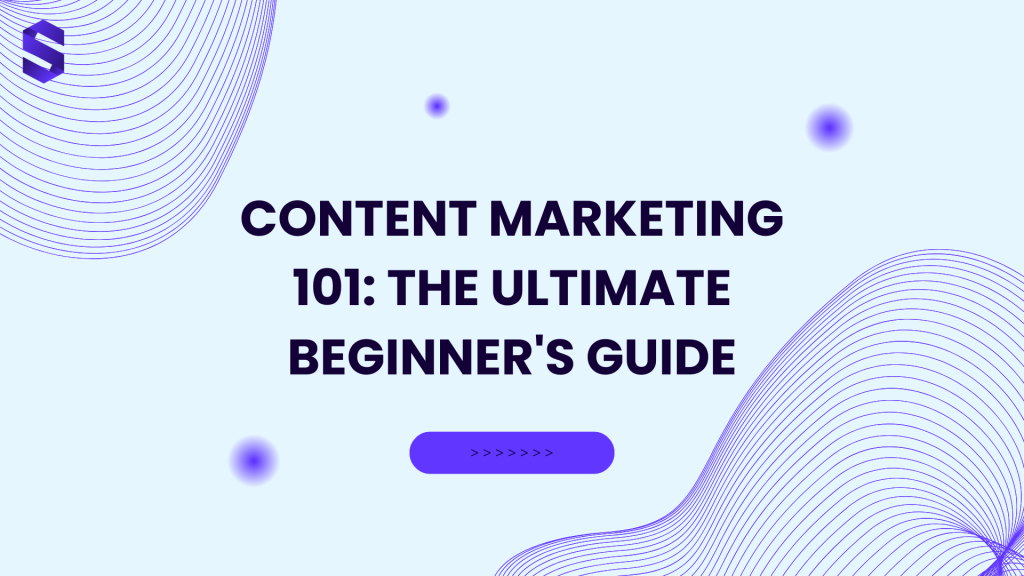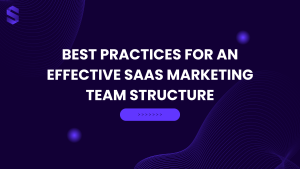Welcome to the world of content marketing! This digital marketing strategy is changing the game for businesses everywhere. It’s all about making and sharing useful, interesting stuff to draw in and keep your audience.
Did you know that bloggers are 13 times more likely to see good returns? That’s why 70% of marketers use content marketing to build trust and connect with people. By sharing helpful stuff, you can make your brand more loyal by 62%.
Content marketing lets you reach out in many ways, like blog posts, videos, podcasts, and infographics. It’s not just about selling. It’s about solving problems and making friends. And 86% of people say they want real, honest brands.
Are you ready to explore content marketing? Let’s see how this inbound marketing can change your business and help you reach your goals.
Key Takeaways
- Content marketing focuses on creating valuable, relevant content for your audience
- Blogging can significantly boost your marketing ROI
- Authenticity is crucial for building brand loyalty
- Content marketing strategies can lead to higher conversion rates
- Diverse content types cater to different audience preferences
- Quality content can dramatically increase website traffic
What is Content Marketing?
Content marketing is a powerful way for businesses to connect with people. It’s about making and sharing valuable content to attract and keep customers. Let’s explore what makes it tick and why it’s key for your business.
Definition and Overview
Content marketing means making and sharing useful content to attract a certain audience. It’s not just about selling; it’s about building relationships. By offering value through blogs, videos, and podcasts, you build trust and show your brand is a leader.
| Content Type | Effectiveness | Usage |
|---|---|---|
| Blogs | 67% more leads monthly | 434% more indexed pages |
| Videos | 91% of marketers use | 78% plan to increase in 2024 |
| Podcasts | 505 million listeners in 2024 | 82% of Gen Z take action after ads |
| Infographics | 650% higher engagement | 60% of businesses use |
Importance in Today’s Business Landscape
In today’s digital world, content marketing is crucial. It boosts brand awareness, improves customer engagement, and drives sales. With 81% of marketers seeing it as a core strategy, it’s clear content marketing is here to stay. It boosts SEO, increases website visits, and builds lasting customer relationships.
Content marketing is not just a trend; it’s a fundamental shift in how businesses communicate with their audience.
By investing in a good content strategy, you’re setting your business up for success. Remember, it’s not just about making content; it’s about making the right content for your audience. With 90% of marketers investing in content marketing, can you afford to be left behind?
The Benefits of Content Marketing
Content marketing is a big help for businesses wanting to grow online. It’s a key tool for getting noticed and attracting more people. Let’s look at why it’s so important.
Boosts Brand Awareness
When you share good content, more people see your brand. Since 97% of marketers use it, it’s proven to work. Good content can make your brand more popular on social media.
Enhances Customer Engagement
Good content builds trust with your audience. It’s not just about selling; it’s about helping and teaching. This makes your customers stick around longer and feel more connected.
Drives Conversions and Sales
Content marketing is great for getting more leads and selling more. It’s cheaper than ads and can make sales go up by 600%. That’s a big win for your business.
| Metric | Traditional Marketing | Content Marketing |
|---|---|---|
| Cost | 100% | 38% |
| Lead Generation | 1x | 3x |
| Potential Sales Increase | Baseline | Up to 600% |
Using content marketing saves money and brings in results. It helps with being seen, keeping customers, and making sales. That’s why 50% of marketers want to spend more on it in 2024.
Types of Content Marketing
Content marketing has many forms to fit what people like. Let’s look at some popular types that can help your marketing.
Blog Posts
Blog posts are very flexible. They help your website rank better and give readers value. Short and long articles both work well, with 55% of marketers saying they do.
Videos
Videos grab attention with stories and pictures. They mix sound and images for a strong effect. Videos can show off products, share what customers say, or explain things simply.
Infographics
Infographics make hard info easy to see. They’re perfect for showing data, stats, or steps in a simple way. This type of content is easy to share and can make your brand more visible online.
Podcasts
Podcasts have really taken off, with episodes jumping from 18.5 million to 30 million in two years. This audio format lets you reach people on the move. It offers info and fun that’s easy to get to.
It’s smart to use different content types together. This way, you can make up to 10 pieces from one good source. It helps you reach more people and use your time wisely.
Understanding Your Audience
Knowing who you’re talking to is crucial for good content marketing. You can make your content hit the mark by knowing your audience well. This means creating the right customer avatars and doing deep market research.
Creating Buyer Personas
Buyer personas are like pictures of your perfect customer. They help you see and get your audience. To make great personas:
- Use tools like Google Analytics for demographic data
- Listen to what customers say to learn what matters to them
- Try tools like HubSpot’s “Make My Persona” to make shareable avatars
Conducting Audience Research
Get to know your audience’s habits and likes through research. This includes:
- Looking at social media analytics for clues
- Checking out Reddit and Facebook groups for what people struggle with
- Watching how people act on your website and content sites
By really getting to know your audience, you can make content that meets their needs. This leads to more people engaging with your content and more sales. Remember, the first step to great content marketing is knowing who you’re talking to.
Struggling to craft content that attracts and converts? Our team specializes in content strategy and SEO-driven storytelling to help your business stand out. Let’s build a content plan tailored to your audience—schedule a free strategy call today!
Developing a Content Strategy
A good content strategy is key to marketing success. It involves planning, making, and sharing valuable content. This attracts and keeps your target audience interested.
Setting Clear Goals
First, set clear content marketing goals. What do you want to achieve? Maybe you want more brand awareness, leads, or sales. Your goals should be clear, measurable, and match your business aims.
Choosing Content Types
Pick content formats your audience likes. Blog posts, videos, infographics, and podcasts are good choices. Mix them up to keep things interesting. Quality is more important than how much you make. Focus on making content that solves your audience’s problems
Scheduling Your Content
Use a content calendar to plan your posts. It helps you organize topics, tasks, and keep content coming. Your planning should include:
- Important dates in your industry
- Seasonal trends
- Product launches or company milestones
A good content calendar keeps your team on track and your audience interested. It’s the key to a steady stream of relevant content.
Don’t think your content strategy is fixed. Keep checking and changing it based on how it’s doing and what your audience says. Being flexible keeps your content fresh and effective in reaching your marketing goals.
Keyword Research for Content Marketing
Keyword research is key for good content marketing. It shows what people are looking for and how to find them. By finding the right keywords, you make content that people like and helps your SEO.
Tools for Effective Keyword Research
Many tools can help you find great keywords:
- Google Keyword Planner: Offers search volume and competition data
- SEMrush: Provides comprehensive keyword analytics and competitor insights
- Ahrefs: Offers in-depth keyword difficulty scores and search trends
- Moz Keyword Explorer: Helps discover related keywords and phrases
- Ubersuggest: Great for finding long-tail keywords and content ideas
These tools help you see how often people search, how competitive it is, and trends. This makes your content marketing better.
Implementing Keywords in Your Content
After finding your keywords, use them well:
- Use a mix of short-tail and long-tail keywords to reach different audiences
- Include keywords naturally in titles, headings, and throughout your content
- Focus on search intent: informational, navigational, or transactional
- Optimize meta tags and URLs with relevant keywords
- Create high-quality, valuable content that addresses user needs
Keyword research is a constant job. Keep updating your plan to stay on top and keep your SEO good. By getting better at keyword research and use, you make content that ranks well and meets your audience’s needs.
Crafting Engaging Content
Creating captivating content is key to successful marketing. Use storytelling and visual content to grab your audience’s attention. This way, they’ll keep coming back for more.
Importance of Storytelling
Storytelling is a powerful tool in content creation. It connects with your audience on an emotional level. This makes your message more memorable.
By weaving narratives into your content, you can bring your brand to life. This creates a lasting impression.
Tips for Writing Compelling Headlines
Your headline is the first thing readers see. Make it count! Use strong words, create curiosity, and promise value. Here are some tips:
- Use numbers or statistics
- Ask intriguing questions
- Make bold statements
- Use power words that evoke emotion
Using Visuals to Enhance Your Content
Visual content is a game-changer in content marketing. Images, videos, and infographics can boost engagement. They make complex information easier to understand.
In fact, content with relevant images gets 94% more views than content without visuals.
| Strategy | Impact |
|---|---|
| Use interactive elements | Increases engagement significantly |
| Optimize with keywords | Enhances visibility and organic traffic |
| Track performance metrics | Enables data-driven content refinement |
By focusing on these aspects of content creation, you can craft engaging content. This content resonates with your audience and drives results for your business.
Distribution Channels for Content
Getting your content seen by the right people is very important. Let’s look at the main ways to share your message.
Social Media Platforms
Social media is a big help for sharing content. With billions of users, sites like Facebook, Instagram, and LinkedIn can help you reach many people. Make sure your content fits each platform’s style for the best results.
Email Marketing
Emails are still a great way to share content with your subscribers. They let you talk directly to your audience and can bring a lot of visitors to your site. Make your subject lines interesting and always add value in your emails.
Content Syndication
Sharing your content on other websites can help you reach more people. It also helps you become known as an expert in your field. Just pick sites that match your brand’s values.
| Distribution Channel | Pros | Cons |
|---|---|---|
| Social Media | Wide reach, engagement opportunities | Algorithm changes, paid promotion often needed |
| Email Newsletters | Direct communication, high ROI | List building takes time |
| Content Syndication | New audience exposure, backlinks | Potential duplicate content issues |
Choosing the right channels for your content is key. Try out different platforms and see what works best. Then, keep improving your strategy.
Measuring Content Marketing Success
Success in content marketing comes from making smart choices based on data. By watching key performance indicators (KPIs), you learn a lot about your content performance. Let’s look at how to measure and analyze your content marketing efforts well.
Key Performance Indicators (KPIs)
KPIs are important metrics that show how well your content strategy works. Here are some key KPIs to watch:
- Website traffic
- Engagement rates
- Conversion rates
- Click-through rates (CTR)
- Social media interactions
Did you know 54% of businesses want to spend more on content marketing this year? This shows how important content is in marketing plans.
Analyzing Data and Metrics
To understand your content marketing data, use analytics tools. Google Analytics, for example, can give you useful info about your website’s performance.
| Metric | Formula | Importance |
|---|---|---|
| Click-to-open rate | (Unique opens / Unique clicks) x 100 | Measures email engagement |
| Conversion rate | (Actions taken / Total interactions) x 100 | Indicates content effectiveness |
| ROI | (Revenue – Cost) / Cost | Shows financial impact |
Good content marketing is not just about making great content. It’s about knowing your audience, checking your results, and improving your strategy with data.
By using analytics and focusing on content performance, you’ll be ready for the changing world of content marketing. You’ll get real results for your business.
SEO Best Practices for Content Marketing
Search engine optimization is key for content marketing success. It helps your content get seen more. Let’s look at some important strategies to make your content better for search engines.
On-Page SEO Techniques
On-page SEO makes your web pages rank higher. Start with great meta descriptions that sum up your content well. They should have the right keywords.
Use header tags (H1, H2, H3) to organize your content. This makes it easier for search engines to get it. Also, put your target keywords in the title, headers, and body text. Since 93% of online experiences start with a search, optimizing is crucial.
Link Building Strategies
Getting high-quality backlinks boosts your website’s authority and rankings. Make content that people want to share and link to. Guest posting and joining forums can get you good backlinks too.
Don’t forget about linking to other pages on your site. This improves navigation and SEO. It helps search engines see your website’s structure and page relationships.
Using these SEO tips will make your content more visible. This means more people will find your website. Always check your SEO with tools like Google Search Console. This helps you keep improving and stay competitive.
Content Marketing Mistakes to Avoid
Content marketing can be tricky, even for experts. Let’s look at common mistakes and how to fix them. This will help improve your marketing strategy optimization.
Common Pitfalls
Many brands face challenges in content creation. A big problem is that 54% of B2B marketers have trouble making content regularly. Also, 44% worry about the quality of their content. This shows the importance of a strong content plan.
- Lack of clear objectives
- Inconsistent publishing schedule
- Ignoring SEO best practices
- Neglecting audience research
- Focusing on quantity over quality
Strategies for Improvement
To beat these challenges, try these strategies:
- Set clear goals before creating content
- Develop a content calendar
- Conduct keyword research
- Create detailed buyer personas
- Prioritize high-quality, valuable content
Also, 79% of successful marketers say knowing your audience well is key. By understanding your audience and avoiding common mistakes, you’ll succeed in content marketing.
“Quality content is not about how much you create, but how well it resonates with your audience.”
By tackling these content marketing challenges, you’ll improve your marketing strategy. This will help your business achieve better results.
The Role of Social Media in Content Marketing
Social media is very important in content marketing today. It’s not just about posting updates. It’s about making a social media strategy that fits with your marketing goals. Let’s see how you can use social platforms to get your content out there and connect with your audience.
Building a Following
To grow your social media, it’s key to share your content well. Here’s how to build a strong following:
- Choose platforms where your target audience is most active
- Share valuable content consistently
- Use relevant hashtags to increase visibility
- Collaborate with influencers in your niche
Sharing valuable content helps businesses connect with customers and show their expertise. This is key for building a community and making your brand more visible.
Engaging with Your Audience
Interacting with your audience is at the heart of social media marketing. To engage more:
- Respond promptly to comments and messages
- Create polls and surveys to gather feedback
- Share user-generated content to build trust
- Host live Q&A sessions or webinars
Remember, social media is a two-way street. Encourage discussions and be open to feedback. This helps in making your brand trusted and growing through targeted strategies.
| Social Media Strategy | Benefits |
|---|---|
| Consistent Posting | Increased Visibility |
| Audience Engagement | Better Brand Loyalty |
| Content Variety | Wider Reach |
| Analytics Tracking | Improved ROI |
By using these strategies, you’ll make a strong social media presence. This will boost your content marketing and help you connect with your audience in meaningful ways.
Repurposing Content for Maximum Impact
Content recycling is a big deal in today’s world. Ninety-four percent of marketers do it, showing it’s a must for success. Let’s see how to make your old content new again and improve your content optimization.
Strategies for Repurposing
Cross-platform marketing is crucial for repurposing content. Turn blog posts into videos, articles into infographics, or podcasts into written pieces. This way, you reach more people, as 62% of consumers like watching videos to learn about brands.
Here are some great ways to repurpose content:
- Create infographics from high-quality collaborative content
- Adapt checklists into video format for increased views
- Share repurposed content as LinkedIn video posts for optimal engagement
- Develop guest posts with unique perspectives using existing material
Benefits of Content Repurposing
Repurposing content has many benefits:
| Benefit | Impact |
|---|---|
| Time-saving | Maintains steady content flow without constant new material creation |
| Improved SEO | Targets different keywords, leading to higher search engine rankings |
| Reinforced messaging | Presents information in various ways, enhancing audience retention |
| Extended content lifespan | Updates and adapts content to keep it relevant, maximizing ROI |
| Increased engagement | Boosts shareability and reach across different platforms |
By using these strategies, you’ll make your content more impactful and reach more people. Remember, repurposing is not just recycling. It’s about making your content fresh and valuable again.
Case Studies of Successful Content Marketing
Looking at content marketing success stories shows us what works. Let’s check out some examples and what we can learn from them.
Notable Examples
Duolingo is known for its fun content strategy. The app uses jokes to connect with people, making them want to share on TikTok. Spotify’s “Wrapped” campaign is also a great example of content marketing. It makes users share their music on social media by using their data.
Old Spice made a big comeback with a funny approach. They used YouTube to talk directly to users, making their brand more popular. This helped them reach more young people.
Lessons Learned
These examples teach us important lessons:
- Use humor and creativity to connect with people
- Make content personal to get people to share it
- Make things interactive to start conversations
- Keep your brand message the same everywhere
- Keep your content fresh and interesting
| Brand | Strategy | Key Result |
|---|---|---|
| Duolingo | Humorous content | High TikTok engagement |
| Spotify | Personalized data | Massive organic sharing |
| Old Spice | Interactive campaigns | Amplified reach and engagement |
By learning from these success stories, you can improve your content marketing. The main thing is to know your audience and give them value through fun, shareable content.
Future Trends in Content Marketing
Content marketing trends are changing fast. New things are coming that will shape this field. Let’s see what’s next and how to keep up with what people want.
Innovations on the Horizon
AI is changing how we make and share content. It helps us make content just for each person. For example, Amazon and Netflix use AI to suggest things just for you.
Video is still very popular. A survey shows 59% of marketers use video, and 76% say it works best. Short videos are becoming more popular because people like quick content.
| Content Type | Percentage of Marketers Using | Effectiveness Rating |
|---|---|---|
| Video | 59% | 76% (Most Effective) |
| Interactive Content | Rising | High Engagement |
| Experience-Based Content | Growing | High Trust |
Adapting to Changes in Consumer Behavior
In 2024, personalization is very important. People want content that feels made just for them. Tools like Ion Interactive help brands make interactive content easily.
Content that shows real experiences is getting more popular. Google now values content that comes from real life. Sites like Reddit are big because they offer real experiences.
To stay ahead, make content that is backed by research. Backlinko, with over 635,000 visitors a month, shows how good experience-based content can be. It draws people in and keeps them interested.
Getting Started with Your Content Marketing Journey
Are you ready to start with content marketing? That’s a great choice. Content strategy development can help your business grow. It’s also cheaper than old-school marketing.
Tips for Beginners
First, know who you’re talking to and what you want to achieve. Make sure your content is top-notch and answers what people need. Google likes long content, with an average of 1,447 words on page one.
Plan your content with a calendar to keep things regular. B2B buyers search Google about twelve times before buying. Your content can help them at each step.
Resources to Explore
Use free tools like Google Analytics to see how you’re doing. Look at website visits, social media shares, and how many people buy from you. About half of B2B marketers hire someone to help with marketing, and most of them focus on content.
Whether you do it yourself or hire someone, having a clear process is key. Keep up with the latest by reading blogs and attending webinars. This way, you’ll always know the best ways to market.
A well-executed content strategy can drive traffic, build trust, and increase conversions. Whether you need SEO-optimized blog posts, engaging social media content, or a complete content marketing plan, we’re here to help. Let’s take your content marketing to the next level—get in touch now!
FAQ
What is content marketing?
Content marketing is about making and sharing valuable content. It aims to attract and keep an audience. It helps drive customer actions by giving useful info or fun stuff, not just promoting a brand.
Why is content marketing important?
It’s key today because it boosts SEO and drives traffic to your site. It also helps sales by building long-term customer relationships. With lots of people online, it’s a great way to reach your audience.
What are the benefits of content marketing?
It boosts brand awareness and customer engagement. It also increases conversion rates and ROI. It builds trust and shows you’re an expert in your field.
What types of content can I use in content marketing?
You can use blog posts, videos, infographics, podcasts, and social media posts. Each type has its own strengths for reaching and engaging your audience.
How do I understand my target audience for content marketing?
Use Google Analytics and social media to learn about your audience. Get customer feedback and create buyer personas. Look at Reddit, forums, and Facebook groups to find what your audience likes.
How do I develop a content strategy?
Start by setting your content marketing mission and goals. Make a content calendar to plan and schedule your content. Decide who will create and approve your content. Make sure you have the right resources and a workflow.
How important is keyword research in content marketing?
Keyword research is very important. It helps you know what your audience is looking for. Use tools like Google Analytics and SEMrush to find keywords and use them naturally in your content.
How can I create engaging content?
Focus on solving problems for your audience. Use stories and compelling headlines. Add visuals like images and videos. Make sure your content is useful and actionable.
What are effective content distribution channels?
Good channels include social media, email marketing, and content syndication. Tailor your content for each channel. Engage in online communities to add value before sharing your content.
How do I measure content marketing success?
Track KPIs like website traffic and social media engagement. Use tools like Google Analytics and BuzzSumo to analyze your data. This helps you see how well your content is doing.
What are some SEO best practices for content marketing?
Optimize your on-page elements and use keywords naturally. Develop a link-building strategy. Focus on creating valuable content that attracts backlinks.
What common content marketing mistakes should I avoid?
Avoid inconsistent publishing and ignoring SEO. Don’t forget to include calls-to-action. Promote your content actively and keep a regular publishing schedule.
How can I leverage social media for content marketing?
Choose platforms where your audience is active. Share content regularly and engage with followers. Use social media to get feedback and find trending topics.
What is content repurposing and why is it important?
Content repurposing means changing your content into new formats. It’s important because it reaches new audiences and reinforces your message. It also makes the most of your content creation.
What are some emerging trends in content marketing?
Trends include personalization and using AI in content creation. There’s also more video and voice search content. Interactive content, AR, and VR are also becoming popular.
How can I get started with content marketing?
Start by knowing your audience and goals. Use a blog as your main strategy. Do keyword research and plan your content with a calendar. Use free tools and keep learning about content marketing.









